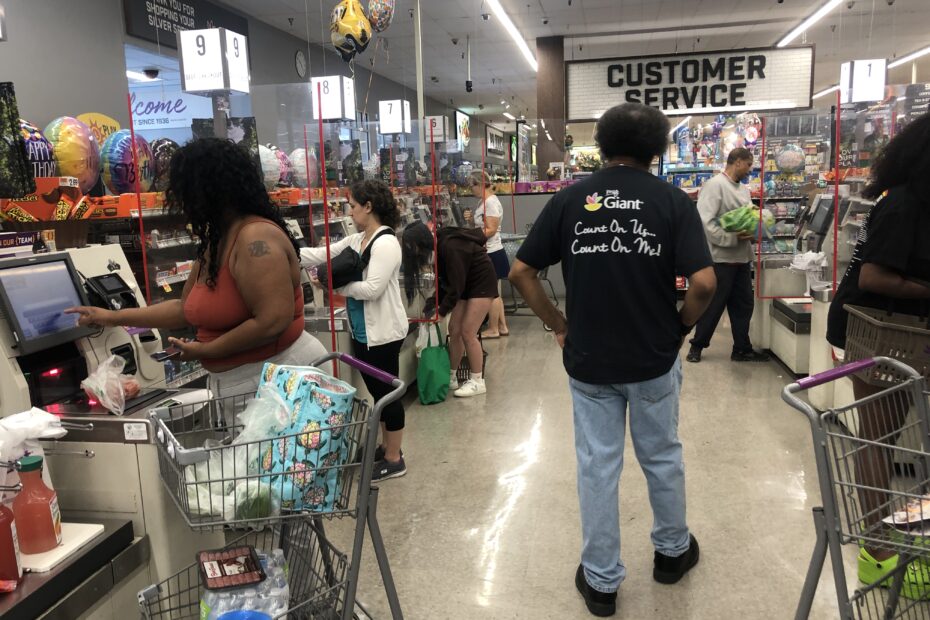In an astonishing 2023 Lending Tree survey of 2,000 shoppers, 15% confessed to intentionally stealing at the grocery store self-checkout. Undoubtedly, the percentage is even higher since many are unwilling to expose their perfidy to pollsters.
Humans are uniquely capable of rationalizing their dishonest behavior. Shoppers may feel compelled to use self-checkout because the queues at the more limited full-service lanes are excessively long. Consequently, shoppers may feel justified in stealing since they believe they’re doing the work of paid employees.
Regardless of shoppers’ behavioral psychology jiu-jitsu, stores that once believed they’d increase their net profits by firing cashiers and installing self-checkout systems got less than they bargained for.
According to the 2023 National Retail Security Survey, shrink, a retail term that refers to a shortfall in expected inventory caused by theft, spoilage, damage, and administrative errors, accounted for approximately a 2% loss in total grocery sales. In a thin-margin business like grocery, shrinkage was already a significant problem before self-checkout. Shrinkage rates at self-checkout are estimated to be a whopping three to four times higher than at staffed lanes.
Theft-related shrinkage includes more than just sneaky tricks at self-checkout. Organized crime rings may coordinate smash-and-grab thefts of expensive items in grocery stores, often with a getaway driver waiting outside.
What’s a store to do? Grocers must thread a needle between offending their mostly law-abiding customers and staying in business. Taking draconian measures may result in degrading the in-store experience to the point where shoppers choose to go elsewhere. Taking milquetoast measures may keep the peace with customers but do little to reduce crime, which will ultimately cause prices to rise.
Most grocers are addressing shrinkage in multiple ways, including these different philosophical and operational approaches:
Locking down the merchandise
CVS stores experienced a huge smash-and-grab problem. They opted to place many items behind locked plexiglass cases. Anyone who has been frustrated by trying to get help in a crowded CVS store understands the problem with this approach. Furthermore, when a shopper selects the most suitable hemorrhoid cream, do they want a store employee hanging around waiting to relock the cabinet?
Matt Bai writes an insightful first-person account about the problem in this July 2025 Washington Post article, titled “CVS Was So Worried About Shoplifting That It Stole Its Own Soul.”
Closing store exits and hiring security guards
Stores with multiple exits make security more complex. It’s more cost-effective for a store to focus on monitoring a single exit, and it’s a minor inconvenience for customers.
Store security wearing riot gear and packing heat at the exit is scary to customers. More casual, friendlier store security makes customers feel safer and less threatened.
Auditing
A store might subject any customer who doesn’t go through the full-service lane at checkout to random audits. During an audit, a store employee scans a dozen items in a shopper’s basket, ensuring that each item is reflected on the shopper’s receipt. The benefit to this low-tech solution is that it’s egalitarian and likely an effective deterrent.
Profiling is a sensitive topic, but stores could selectively audit recidivist customers or those who have been in the store for a long time and made few purchases.
Using technology for shrink detection
Smart carts from companies like Cust2Mate, Caper Cart, and Amazon Dash Cart come equipped with anti-theft devices. On-cart cameras, scanners, and weight sensors discern if customers accidentally or intentionally add items into the cart that aren’t accounted for.
The benefit of using technology to reduce shrink is that it’s nonconfrontational. Although the cart doesn’t outright accuse a customer of theft, it can flag discrepancies and mandate resolution without offending shoppers.
The downside of using technology for shrink detection is the occurrence of false positives. If shoppers must constantly seek assistance to address smart cart-reported ambiguities, the technology won’t seem so smart, and customers will reject it.
Using technology to expand market baskets
Most smart cart companies utilize location awareness to target shoppers and boost sales. A shopper tooling down the cookie aisle might see a discount or BOGO on Oreos pop up on their large console screen. While a shopper may have enough willpower to resist a single Oreo deal, a constant flow of offers based on a customer’s past purchases is likely to erode their self-control, leading them to buy more.
These indirect solutions are innovative. Location-based marketing mitigates the losses from shrinkage by increasing the total revenue — provided customers don’t shoplift these special offers.
Eliminating self-checkout
Many stores are reverting to simpler times by restaffing their full-service lanes and shutting down customer self-service. From a shrinkage perspective, this may benefit a store’s bottom line. However, this type of surrender is off-putting to customers resentful of having to wait in the 10-items-or-less lines again.
Ideally, stores and people alike should attempt to move forward, not backward. Introducing technology that improves self-checkout and adds anti-shrink measures might result in customers being happier with the process and less likely to feel entitled to steal.
Final thoughts
Shoplifting has always noticeably and negatively impacted grocers’ net profits. However, the COVID-19 pandemic led to widespread unemployment, significant supply chain disruptions, and substantial increases in grocery prices. A 2024 National Retail Federation study found that shoplifting incidents increased by 93% since the COVID-19 pandemic.
Perhaps the most distressing outcome of the pandemic is how it has further exacerbated the country’s divisions. Yes, grocery prices are still too high, but until some societal knitting-together occurs, grocers are fighting a Sisyphean uphill battle against theft.
